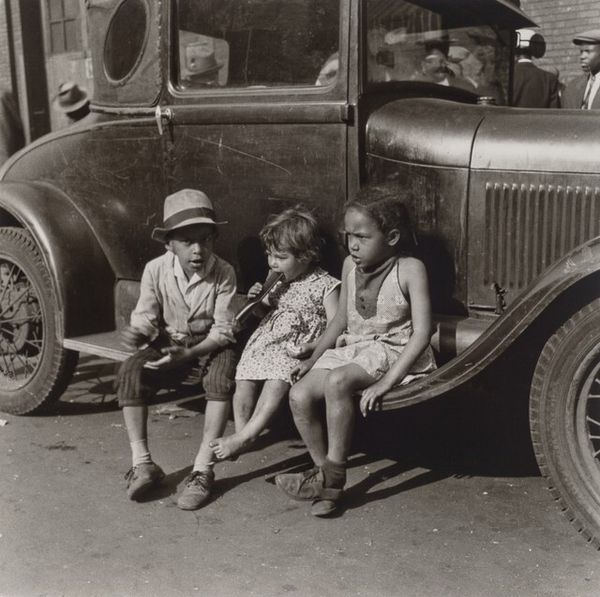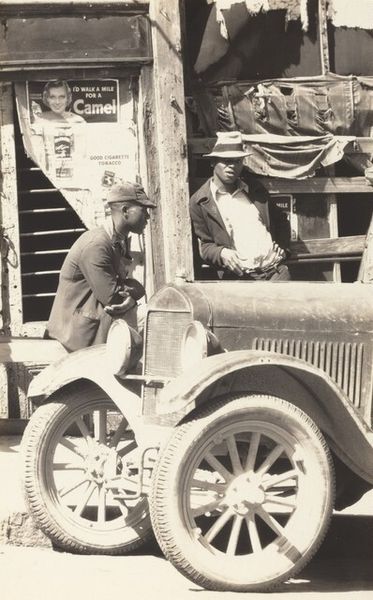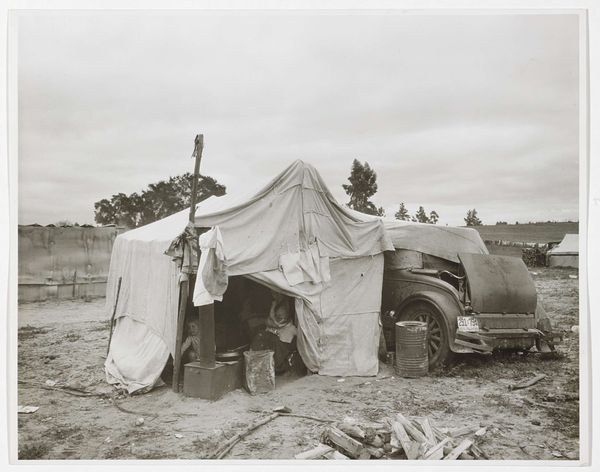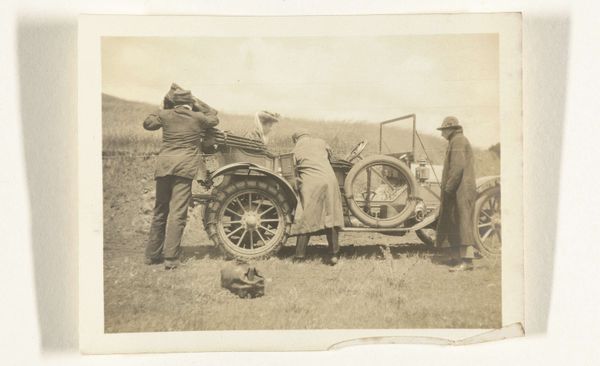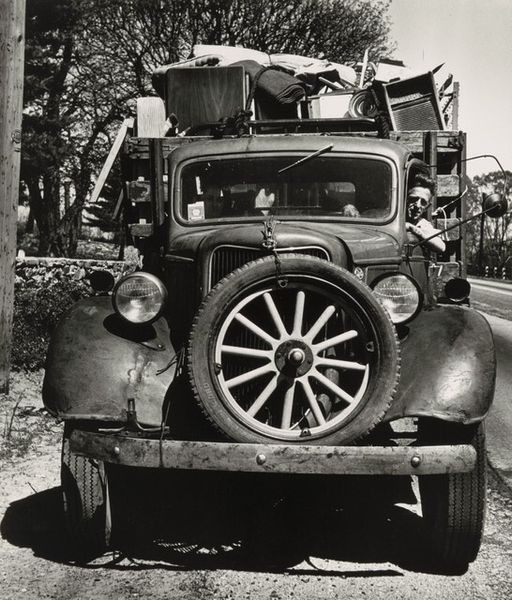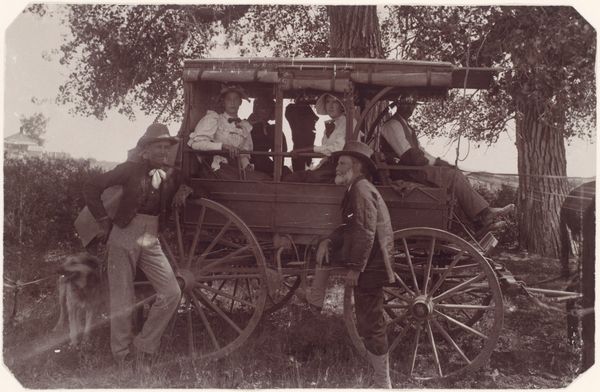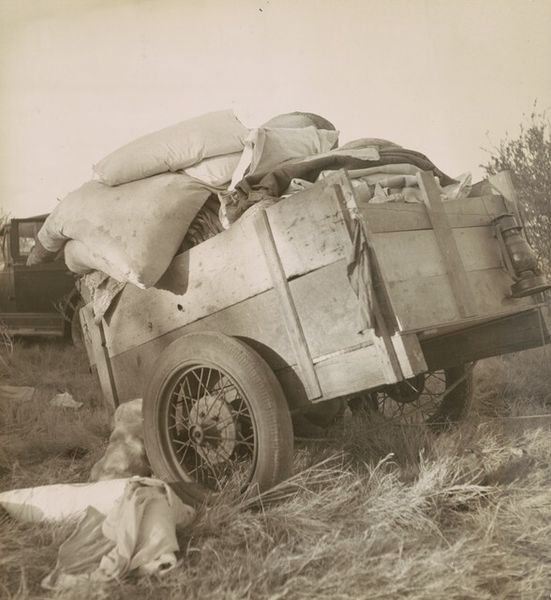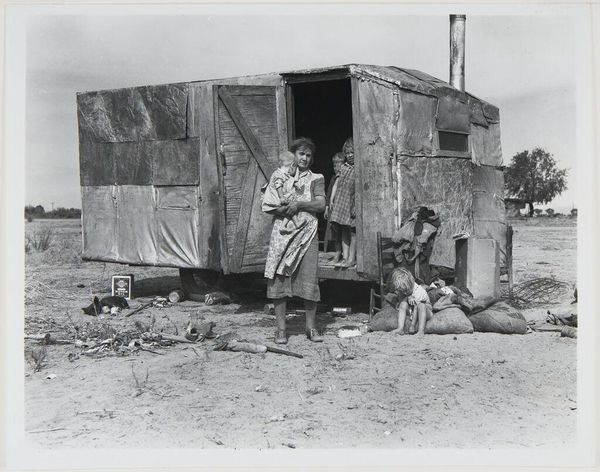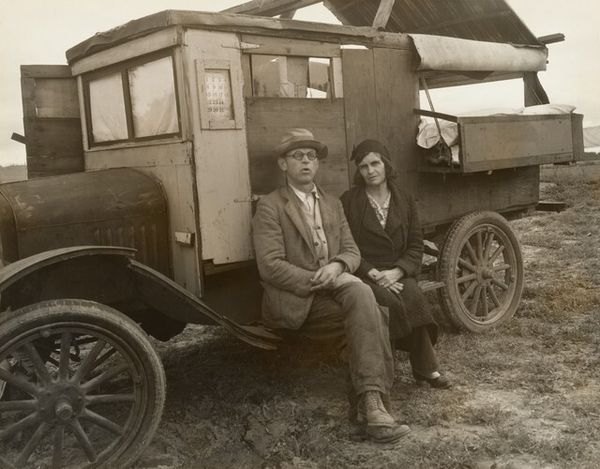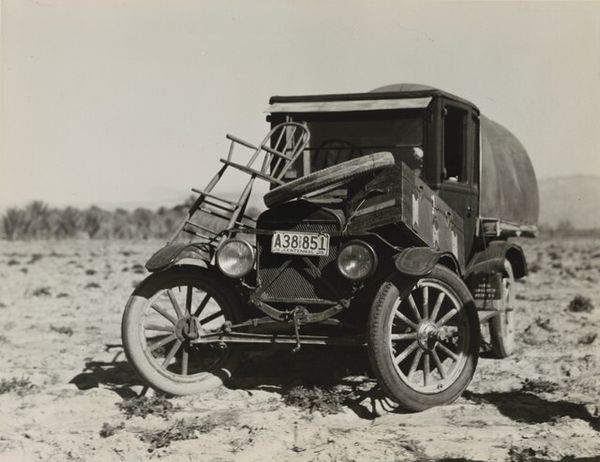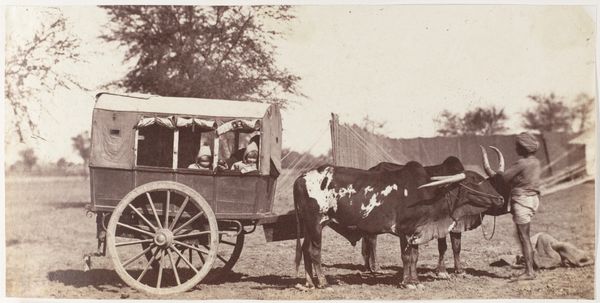
Fords are beginning to appear among the tobacco sharecroppers. Douglas, Georgia c. 1938 - 1969
0:00
0:00
photography, gelatin-silver-print
#
portrait
#
automotive concept
#
vehicle design
#
black and white photography
#
landscape
#
black and white format
#
social-realism
#
automotive design photography
#
photography
#
black and white theme
#
black and white
#
gelatin-silver-print
#
monochrome photography
#
ashcan-school
#
vehicle
#
monochrome
#
realism
Dimensions: image: 19.6 × 18.9 cm (7 11/16 × 7 7/16 in.) sheet: 25.2 × 20.3 cm (9 15/16 × 8 in.)
Copyright: National Gallery of Art: CC0 1.0
Curator: Dorothea Lange's gelatin-silver print, titled "Fords are beginning to appear among the tobacco sharecroppers. Douglas, Georgia," captures a potent image of rural America sometime between 1938 and 1969. What's your immediate take? Editor: It strikes me as remarkably somber. The stark monochrome palette, combined with the family's weary postures, lends a melancholic feel. The flat tire further emphasizes a sense of stagnation or impediment. Curator: Indeed. Consider the socio-economic implications embedded within this composition. Lange, deeply influenced by the Ashcan School and her own social-realist lens, aimed to document the plight of marginalized communities. Here, the presence of the Ford alludes to changing times, but the sharecroppers' worn appearance reminds us that progress isn't evenly distributed. Editor: I agree, and on closer examination, the textural contrasts enhance this narrative. The rough burlap sacks atop the car juxtapose against the smoother metallic surfaces, suggesting the coexistence of agricultural life with the rise of industrialized transportation. Furthermore, the deflated inner tube takes center stage; a strong geometric form which paradoxically symbolizes lack, deficiency. Curator: Absolutely. We can dissect the composition, noticing the placement of the sharecropper in the direct foreground, visually symbolizing his importance. He occupies a central position in contrast with his perceived marginal status in American society. His pose is casual but reserved— his eyes conveying both fatigue and a profound understanding of his surroundings. Editor: His gaze does seem to pierce through time. Notice too how the vehicle's design leads the eye from left to right before looping towards the central figure; the eye cannot escape its sorrowful truth. The subdued contrast overall leads us towards more subdued readings that align perfectly with its subject. Curator: This resonates profoundly when viewing this photograph with an intersectional perspective. Issues of class, race, and regional identity intertwine to portray the intricacies faced by many American rural workers, notably in Georgia's agricultural landscape during the mid-20th century. This shot goes beyond mere documentation and turns into an explicit social commentary. Editor: Looking closer reveals subtle signs of resilience. It’s interesting how the car itself—the eponymous Ford—almost acts like an architectural structure of sorts for a temporary domicile amidst uncertain circumstances; it highlights adaptability born out of scarcity. In Lange’s orchestration of light and shadow, there lies the power to extract more profound considerations concerning what is lost against what remains. Curator: Exactly, this isn't solely an aesthetic study. The image offers us vital entry points to probe questions of inequality and perseverance while reminding audiences of photography's power in shaping historical understanding through artistic practice. Editor: Yes, ultimately, Lange's piece urges reflection on society’s stratified nature using aesthetic elements and documentary pragmatism combined to encourage audiences not just observe reality but contend actively.
Comments
No comments
Be the first to comment and join the conversation on the ultimate creative platform.
